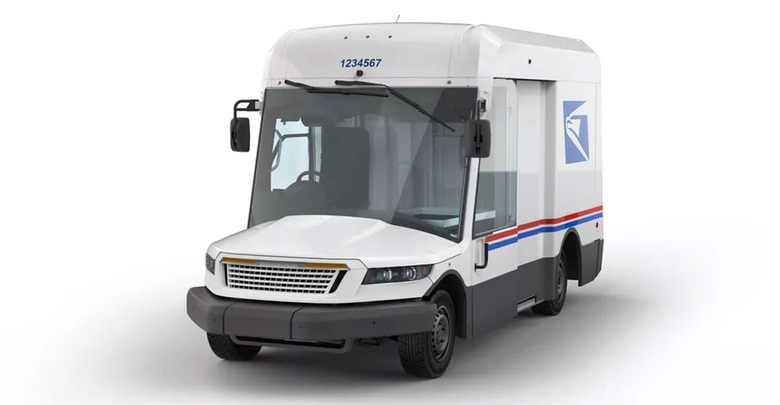USPS Under Fire For New Mail Truck's Dire Fuel Economy
The new US Postal Service fleet would be less efficient than a Hummer H1, and barely more frugal than the aging outgoing vehicles, the EPA has warned, throwing an EV roadblock into the multi-billion revamp of how Americans' mail is delivered. Though the USPS had settled on a 10 year agreement for as many as 165,000 of the distinctively designed vehicles – worth as much as $6 billion – concerns have been raised that the opportunity for electrification is being squandered.
The current mail carrier fleet is an aging one, arguably long overdue a revamp. Produced between 1987 and 1994, the Grumman LLV was a custom design for the USPS, with features like a curbside seating position for the driver, sliding doors, a particularly tight turning-radius for greater maneuverability, and a 1,000 pound cargo capacity.
It was also designed to last, even given the tough conditions it would face. A 20 year lifespan was originally intended, but that was later extended to three decades. However, it also means that the fleet's old engine design – first a 2.5-liter inline-four, and later a 2.2-liter version, paired with a low-geared three-speed transmission – isn't exactly known for being efficient. That's one area observers had hoped the new USPS fleet would improve, but it may not be the case.
While the new Next Generation Delivery Vehicle (NGDV) – designed by Oshkosh Corp, with the vehicles expected to be delivered over the course of the next decade – certainly looks more futuristic, their gas-powered drivetrain isn't a game changer, it seems. In a letter from White House Council on Environmental Quality chair Brenda Mallory, "grave concerns" from the EPA around the environmental review carried out by the USPS have prompted a call for a delay in the final agreement with Oskhosh Corp.

The EPA pointed out that economy from the new vehicles would be hardly improved over the real-world numbers of the current, 30 year old design. That gets, on average, 8.2 mpg the EPA calculates, Reuters reports. The new USPS fleet, in contrast, is expected to manage just 8.6 mpg. That would mean "barely improving over the decades old long-life vehicles" they were replacing.
As for the Postal Service's plans to make 10-percent of the new fleet all-electric, that too is woefully inadequate, the EPA and the White House argue. After ten years, the EPA calculates, relevant annual fleet emissions would only have been cut by 21.7%. Meanwhile, over the two decade long predicted lifespan of the gas-powered vehicles, they would have collectively emitted the same amount of carbon dioxide as five coal-fired power plants, or 4.3 million passenger vehicles.
In her letter, Mallory argues that the new vehicle design "presents a critical opportunity to harness modern clean technologies, reduce pollution, and sustain competitiveness over the coming decades." She calls for a 70% electrification of the fleet by the end of the decade, far greater than the 10% the USPS and Oshkosh Corp currently intends. In the process, the Biden Administration's Build Back Better Act would contribute up to $6 billion for the USPS, for things like BEVs and charging infrastructure.
As for the Postal Service, it argues that such an aggressive plan to embrace electrification might struggle when it comes to legal requirements for the organization's operations.
"While we can understand why some who are not responsible for the financial sustainability of the Postal Service might prefer that we acquire more electric vehicles, the law requires us to be self-sufficient," it said in a statement. While the USPS insists it is in compliance with the current demands of environmental review, it is nonetheless "willing to accelerate the pace of electrification of our delivery fleet if a solution can be found to do so that is not financially detrimental to the Postal Service."
Mallory warned in her letter that, if the USPS did not voluntarily improve its review process, it could face moves by Congress or US Federal courts to do so instead. The first NGDVs had been expected to begin service by 2023.
